Navigating the Aural vs. Electronic Tuning Debate
In the heart of the piano tuning world, a spirited debate unfolded between aural and electronic tuning methods, as showcased in a front-page feature by the Los Angeles Times. This insightful article highlighted the perspectives of two esteemed piano tuners, one firmly rooted in the traditional aural tuning approach and the other, having initially embraced aural tuning, "defected" to the electronic camp. Despite the dichotomy, both experts presented compelling arguments in favor of their chosen methods.
Honoring Aural Tradition
The first tuner, a staunch advocate for aural tuning, embodied a rich tradition rooted in the keen sensitivity of the human ear. With years of experience, this tuner's approach celebrated the nuanced art of tuning by ear, allowing for a personalized and finely tuned result that resonated with the unique character of each piano. This method emphasized the tuner's artistry and ability to capture subtle tonal nuances.
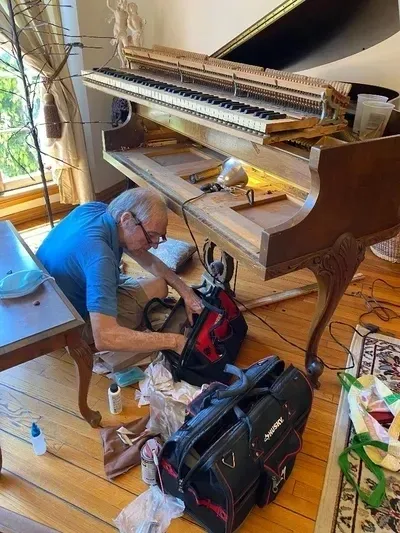
Embracing Technological Precision
Conversely, the second tuner, while commencing as an aural specialist, transitioned to the electronic camp without fully abandoning the aural tradition. This shift was marked by an embrace of technology's precision and consistency. This tuner presented a convincing argument for the same degree of accuracy achievable through aural tuning.
Bridging Aural and Electronic Tuning Perspectives
In this spirited debate, both perspectives shed light on the richness of the world of piano tuning. While the aural tradition preserves the artistic finesse of the human ear, electronic tuning complements it with technological precision. The dialogue between these two approaches not only enriches the craft but also offers pianists a diverse range of options to cater to individual preferences and the unique needs of each piano.

Harmony of Tradition and Technology in Piano Tuning
In the initial eleven years of my career, I held a steadfast commitment to aural tuning, considering it an integral part of my craft. However, recognizing the evolving landscape of piano tuning resources, I transitioned to the use of electronic devices, initially with some reluctance. Today, having experienced the synergy between both methods, I firmly believe that a harmonious blend of aural and electronic tuning yields the most optimal results.
The Artistry of Aural Sensitivity
The first phase of my career was marked by an aural fixation, celebrating the artistic finesse achievable through the human ear. This traditional approach allowed me to finely tune pianos, relying on the nuances discerned through years of experience. The sensitivity of the ear, though remarkable, has inherent limitations in achieving the mathematical accuracy that modern electronic tuning devices offer.
Embracing Technological Precision
Reluctantly making the transition to electronic devices, I now employ either the Cybertuner or Tunelab, both recognized as mainstream and highly accurate tools in the market. These devices, with their technological precision, contribute significantly to achieving optimal tunings. They excel in creating the necessary stretched octaves and critical intervals, such as tenths and seventeenths, essential for a truly accurate and nuanced tuning.
Achieving Excellence with Aural and Electronic Tuning
In my experience, the combination of aural and electronic tuning techniques represents the pinnacle of tuning excellence. The ear's artistry finds synergy with the precision of electronic tools, resulting in a harmonious convergence that elevates the quality of piano tunings to unparalleled heights.
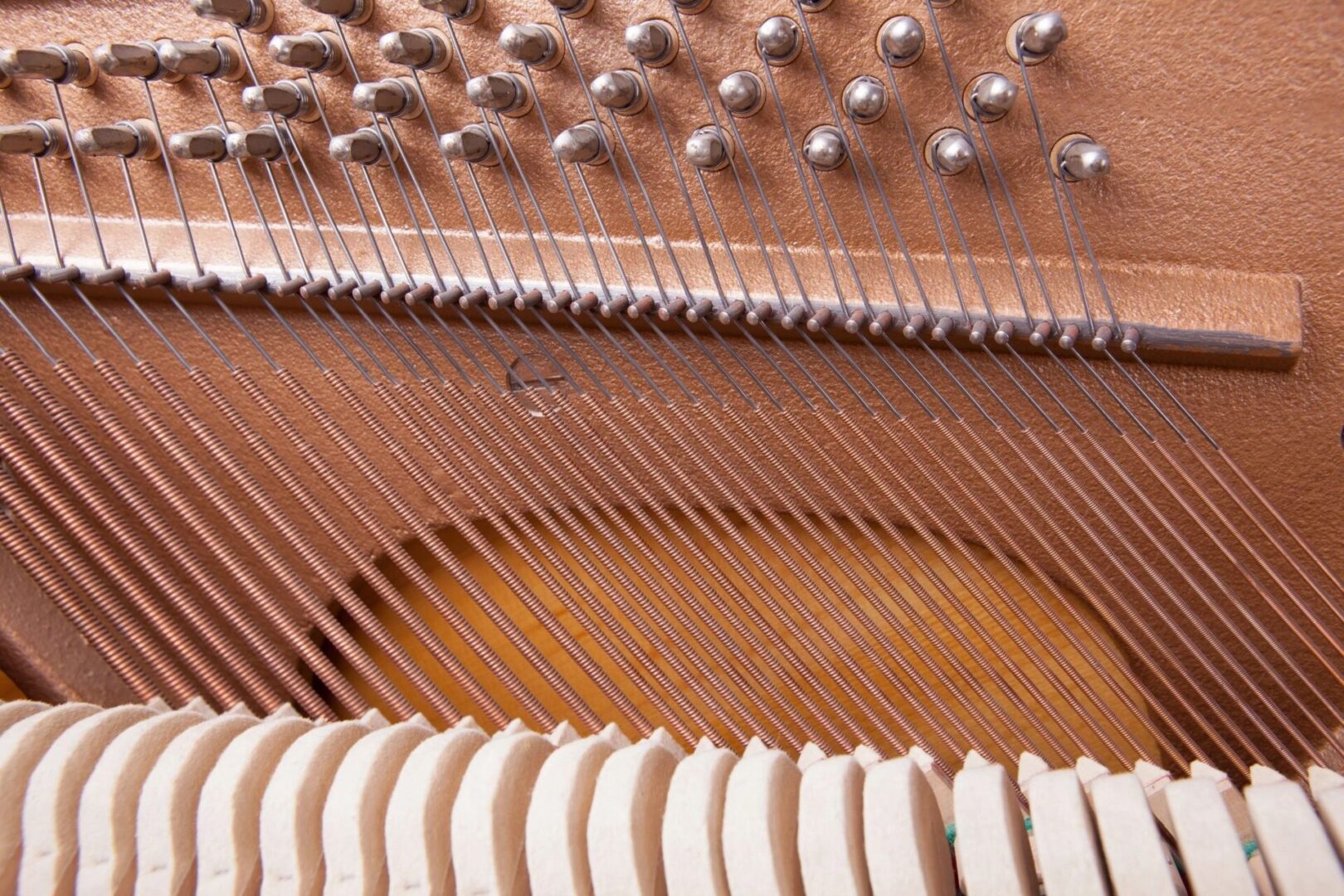
The Limitations of Solely Machine-Based Tuning
In achieving optimal piano tunings, a nuanced approach involves recognizing the drawbacks of relying solely on a machine. While electronic tuning devices offer precision, my experience underscores the undesirable outcomes that can arise, particularly in unison tuning. The ear, when employed alone, consistently produces superior results in unison tuning as infinitesimal deviations, often overlooked by machines, can lead to less-than-optimal outcomes for individual notes.
Unraveling the Nuances in Unison Tuning
Unison tuning demands a level of sensitivity that the ear uniquely provides. The minute variations detected by the human ear are crucial for ensuring a harmonious and in-tune quality in the sound. Sole reliance on machines may overlook these subtleties, resulting in a discernible "out of tune" quality that a seasoned piano technician can readily identify.
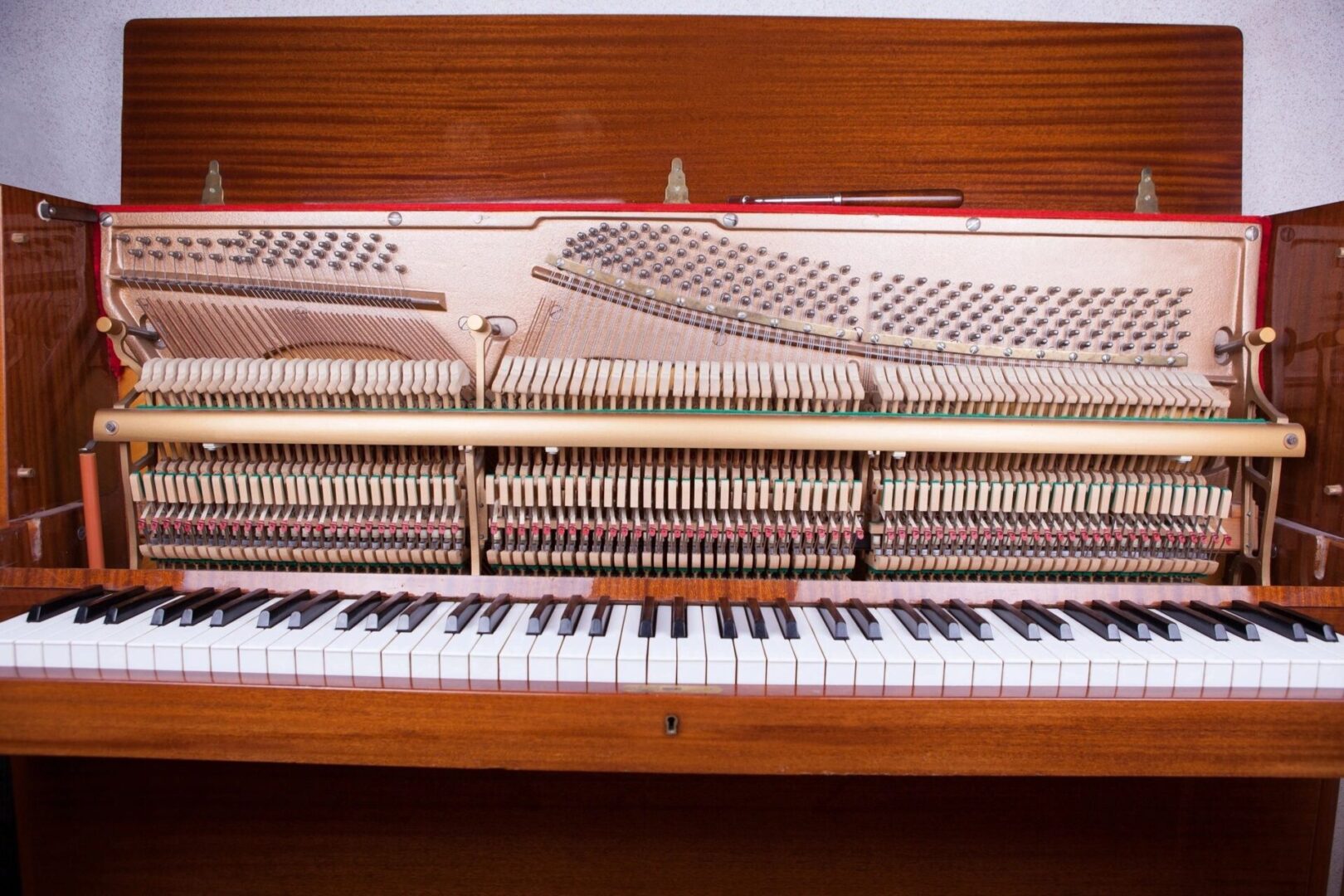
Fifty Years of Experience
While my intention is not to impose a preference, I aim to inform readers about my extensive fifty years of experience as of 2024 with both aural and electronic tuning approaches. By shedding light on the nuanced challenges and strengths of each method, my goal is to provide a comprehensive perspective, allowing individuals to make informed decisions based on their unique preferences and requirements.
Most Popular American Brands
The Epitome of Musical Excellence
Steinway, often referred to as the official "Cadillac" of American pianos, stands as a pinnacle in the world of musical craftsmanship. Its distinguished reputation is not only derived from the numerous concert pianists who passionately play and endorse it but also from its extensive array of patents. Featured prominently in the acclaimed film "Note by Note," which meticulously captures the one-year construction process of a concert grand model, Steinway continues to exemplify unparalleled quality.

Restoring Excellence in Craftsmanship
While models produced during the 70s and 80s under CBS ownership faced criticisms due to alterations in the action, notably the use of Teflon bushings, Steinway has successfully reclaimed its historical excellence. The brand's commitment to reinstating superior craftsmanship has garnered praise and admiration.
Exploring the Steinway Experience in Los Angeles
Visiting the Steinway dealership in Los Angeles is an experience in itself akin to stepping into a high-class piano salon. The ambiance exudes sophistication, making it a worthwhile journey for enthusiasts and connoisseurs alike to explore and appreciate the timeless excellence of Steinway pianos.

An Underrated Gem in the Piano World
Mason & Hamlin, although lacking the widespread recognition enjoyed by Steinway, holds its own among discerning musicians who appreciate its exceptional tone and action. Despite featuring a patented tension resonator, a spoke-like device enhancing inner rim stability, the brand never received the same aggressive marketing as Steinway. Consequently, many remain unaware of its well-deserved reputation for high quality. Notably, the pinnacle of Mason & Hamlin's craftsmanship is often associated with the "Golden Era" of piano making, spanning from the 1920s to the 1950s. However, the brand experienced a resurgence in excellence starting in the 1990s, solidifying its position as a noteworthy contender in the world of pianos.
A Legacy of Endorsements and Restructuring
Baldwin once considered a mainstream choice in pianos, gained notable endorsements, with even the renowned Liberace reportedly owning five. Despite being endorsed by several concert players, the brand faced a decline in sales, ultimately leading to its declaration of bankruptcy a few years ago. In a strategic move, Fender Gibson, a well-known guitar manufacturer, acquired Baldwin, ushering in a new chapter for this venerable piano brand.
Baldwin's Popular Upright Models
Baldwin's product line included two widely recognized upright models, each contributing to its prominence in the piano industry. The Hamilton model, characterized as an "institutional" brand, gained widespread usage in schools, becoming synonymous with educational musical environments. Additionally, the Acrosonic spinet, a smaller upright model, enjoyed significant popularity, adding to Baldwin's legacy as a manufacturer of diverse and well-received pianos.

A Historical Rival to Steinway with Unparalleled Craftsmanship
Chickering recognized as the chief rival to Steinway in the 19th century, earned its reputation for exceptional craftsmanship. Founded by Jonas Chickering, who held a patent for the cast iron frame, the brand quickly established itself as a mainstream provider of fine pianos. The dedication to quality and innovation, particularly in the construction of the cast iron frame, contributed to Chickering's prominence in the competitive piano industry during the 19th century.
Navigating a Period of Transformation
Chickering, like its contemporaries such as Mason & Hamlin, underwent a period of transformation when it became part of the Aeolian Co. This era, while marked by shifts in ownership and management, also saw changes in the perception of American pianos, with some opinions suggesting a temporary decline in quality. Despite this, Chickering's historical significance and legacy remain rooted in its role as a formidable rival to Steinway and its commitment to excellence in piano craftsmanship.


The Resonant Elegance of the Metropolitan Opera's Official Choice
Knabe, distinguished as the "official piano of the Metropolitan Opera," boasts a remarkable "singing" quality, aligning seamlessly with the grandeur and precision required by such esteemed musical performances. Comparable to renowned brands like Steinway, Chickering, and Mason & Hamlin, Knabe pianos are highly regarded as excellent candidates for rebuilding or restoration, particularly those crafted during the early 20th Century through the 1950s. This legacy of quality craftsmanship positions Knabe as a timeless choice for those who appreciate the enduring elegance and musicality of a well-maintained piano.
A Trusted Workhorse with Exceptional Construction
Yamaha's pianos have consistently proven themselves as reliable "workhorse" models, earning a reputation as an excellent choice for those seeking a high-quality and versatile instrument. Described as a commendable "generic" piano, Yamaha's appeal lies in its fine construction, which translates into a superior tone and consistently even action. These attributes make Yamaha pianos a preferred choice in professional settings such as studios and nightclubs, where precision and reliability are paramount.
Exploring the Grey Market Editions of Yamaha Pianos
While Yamaha pianos maintain their status as a top-tier choice, the increasing cost over the years has led buyers to consider alternative options. Many opt for the more affordable "gray market" editions, which have previously been in use in Japan before being exported elsewhere. This cost-effective solution allows enthusiasts and professionals alike to access the renowned quality of Yamaha pianos while accommodating budget considerations. As Yamaha continues to evolve, its reputation for reliability and craftsmanship remains intact, making it a stalwart choice for a diverse range of musical environments.

An Evolving Presence on the American Stage
Kawai pianos have established themselves as a formidable presence in the piano market, often regarded on par with Yamaha, depending on individual preferences. Over the years, Kawai has undergone a significant evolution since its initial introduction to the American scene. Notably, the current RX series stands out for its exceptional quality, offering a noticeably mellow sound compared to earlier models. This consistent commitment to improvement positions Kawai as a noteworthy choice for discerning musicians seeking a harmonious blend of craftsmanship and tonal excellence.
Kawai Pianos as a Financially Viable Alternative
For those seeking quality on a budget, Kawai presents an appealing option, especially when compared to similarly sized Yamaha counterparts. The affordability of all Kawai models makes them an attractive choice for individuals with tighter budget constraints, without compromising on craftsmanship or performance. As Kawai continues to refine its offerings and enhance its presence in the market, it remains a reliable and cost-effective alternative for musicians looking to invest in a piano of reputable quality.

A Prolific and Practical American Classic
Kimball's pianos, often likened to the "Chevy" of American pianos, have left an indelible mark as one of the most widely manufactured brands in the country. Renowned for their prevalence, Kimball pianos have been a staple in countless households and musical spaces. The older upright models, in particular, boast an attractive tiger oak veneer, adding a touch of elegance to their timeless design. However, the practicality of Kimball pianos extends beyond aesthetics, as the consoles and spinets produced in the 1970s became a practical investment due to their affordability, making them accessible to a broader audience.
Kimball Pianos in the 1970s
During the 1970s, Kimball introduced notable innovations aimed at enhancing the durability of their pianos, particularly in the grand models. A significant stride was the implementation of laminated soundboards, a thoughtful solution to bolster the sturdiness of the boards. This design choice addressed concerns related to climate conditions, reducing the susceptibility to cracking. The incorporation of such innovations showcases Kimball's commitment to practicality, longevity, and adaptability in the ever-evolving landscape of piano manufacturing.
A Pioneering Legacy in American Craftsmanship
Wurlitzer pianos, often regarded as the "Ford" of American pianos, have left an enduring imprint on the country's musical landscape. Akin to the reputation of the Ford brand, Wurlitzer stands as a symbol of enduring quality and accessibility in the realm of pianos. The spinet, in particular, gained significant popularity during the 1950s, reflecting Wurlitzer's commitment to producing instruments that resonate with a broad audience and musical enthusiasts.
Wurlitzer Pianos in the 1970s
While Wurlitzer pianos enjoyed widespread acclaim, the 1970s marked a period of challenges that impacted the overall quality of American pianos, including Wurlitzer. A notable decline was observed, attributed not solely to craftsmanship but also influenced by external factors such as a ban on the use of buckskin. The necessity to substitute materials introduced new complications, exemplified by issues like sticking keys. Despite these challenges, Wurlitzer's legacy remains significant, underscoring its historical role in shaping the American piano landscape and its ongoing commitment to overcoming obstacles in the pursuit of musical excellence.
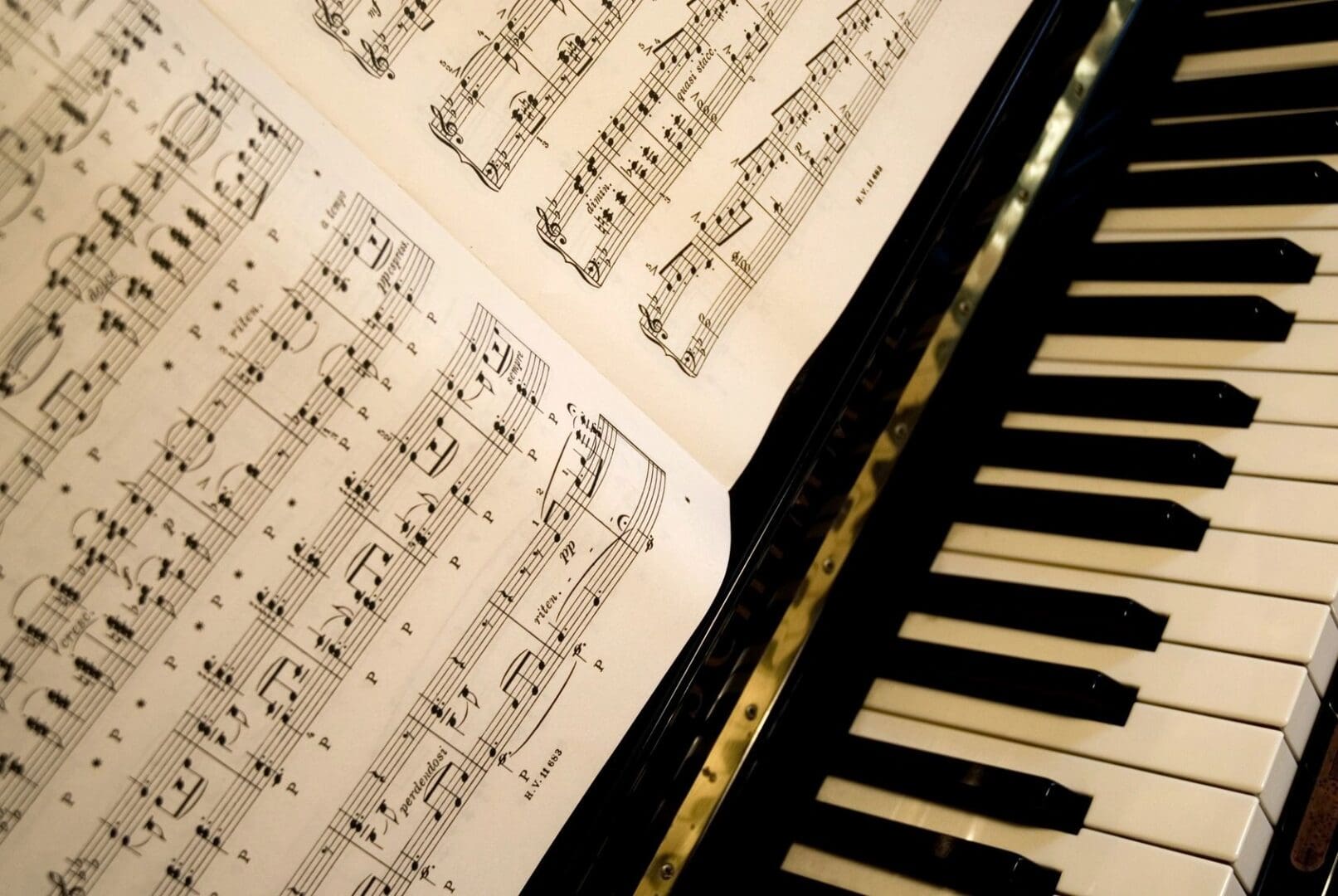
Pioneering South Korean Excellence in the 1980s
Young Chang emerged as a trailblazer among the first South Korean pianos to make a significant impact on the U.S. market during the 1980s. Noteworthy for its affordability, Young Chang quickly gained popularity, capturing the attention of aspiring musicians and enthusiasts alike. However, early models were not without their mechanical issues, presenting challenges for technicians who found themselves tasked with addressing these concerns.
Elevated Craftsmanship Under Joseph Pramberger's Influence
The trajectory of Young Chang took a transformative turn when Joseph Pramberger, formerly associated with Steinway, joined the company. Pramberger's expertise and influence ushered in a notable improvement in the overall quality of Young Chang pianos. His contributions were instrumental in refining the mechanical aspects and enhancing the overall performance of the instruments. Following Pramberger's passing, Young Chang continued to honor his legacy by producing pianos under the Pramberger label, maintaining a commitment to elevated craftsmanship and the pursuit of excellence.
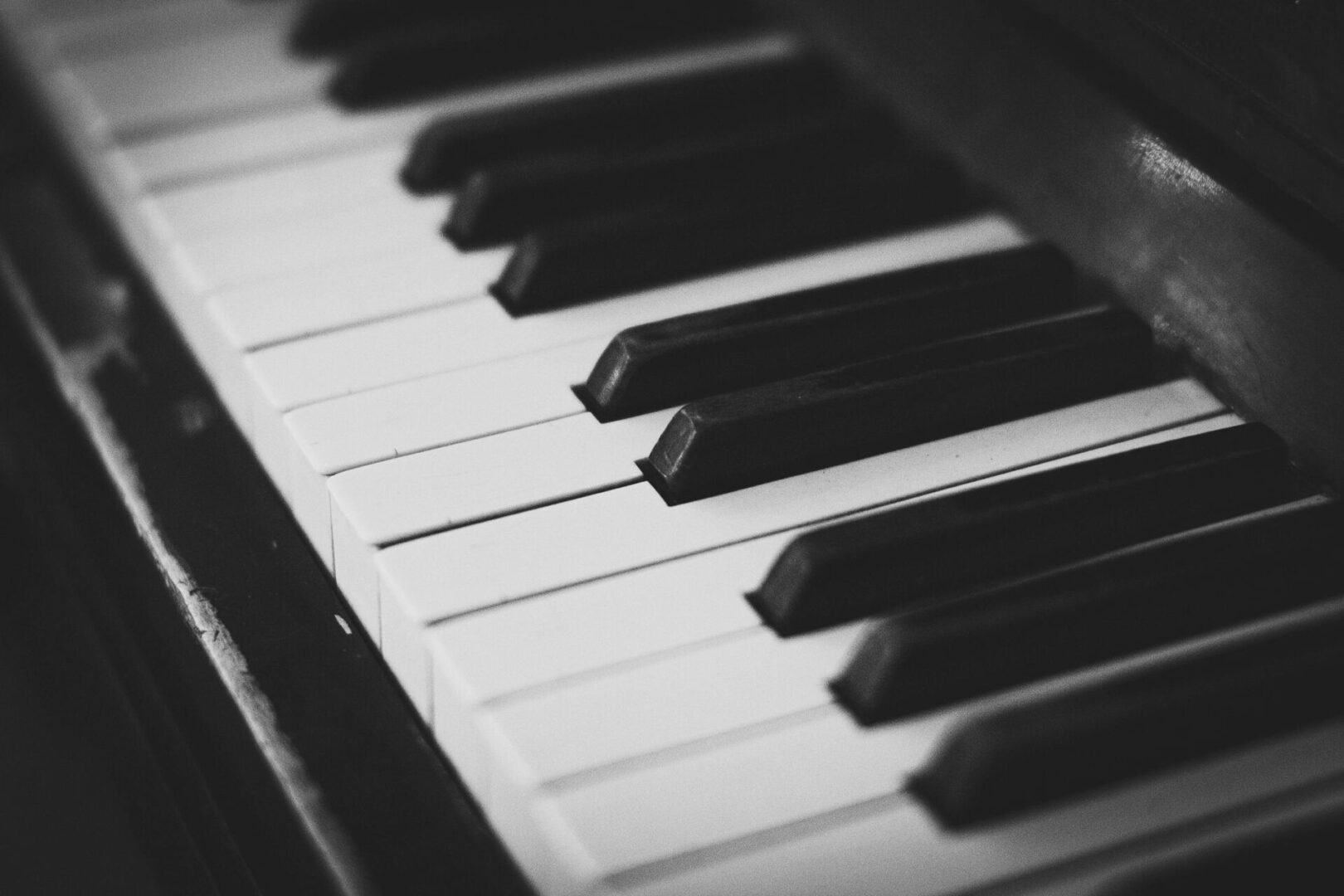
A Journey from Challenges to Quality With Expert Intervention
Samick, another prominent Korean-manufactured piano, initially faced mechanical challenges, similar to its counterpart, Young Chang. However, the introduction of German technician Klaus Fenner marked a turning point for Samick pianos, leading to substantial improvements in their mechanical performance. Fenner's expertise contributed significantly to elevating the overall condition of the pianos, addressing issues that had previously posed challenges.
Samick Pianos as Ideal Starters
Today, Samick pianos, much like Young Chang and other recent arrivals from China, have evolved into instruments of commendable quality and affordability. These pianos are now considered fairly decent options, making them particularly suitable as "starter" instruments for beginners. Samick Pianos caters to parents seeking an affordable yet reliable choice for children embarking on their piano studies, providing an excellent balance of quality and accessibility for those uncertain about the longevity of their child's musical pursuits.
Exemplifying Unrivaled Craftsmanship and Quality Emphasis
European pianos, including renowned brands such as Bosendorfer, Bechstein, Bluthner, Hamburg Steinway, Steingraeber, and Fazioli, stand as epitomes of true craftsmanship. Having had the privilege of visiting several of their factories in the summer of '79, I witnessed firsthand the unwavering commitment to quality that characterizes these prestigious manufacturers. The European tradition places an exceptional premium on quality, evident in the meticulous attention to detail and the willingness to spare no expense to achieve superlative results. This dedication is reflective of the longstanding European emphasis on high-quality production standards.
European Pianos in Performance
European pianos distinguish themselves not only through craftsmanship but also through their distinctive sound. Exhibiting a mellower tone compared to their Asian and American counterparts, they find particular suitability for certain repertoire, notably the works of Chopin, Liszt, and Debussy. While this characteristic might be perceived as less conducive to pianists seeking a more percussive sound for dramatic renditions of Rachmaninoff concertos, it remains a subjective judgment. Renowned concert and jazz pianists like Victor Borge, Garrick Ohlsson, and Oscar Peterson have demonstrated a steadfast devotion to the Bosendorfer, underscoring the personal and artistic preferences that shape the world of piano performance. However, it's essential to note that the landscape of piano brands is dynamic, with changes often stemming from acquisitions and other factors. As of the time of this writing, some information may have evolved, highlighting the continuous evolution within the industry.
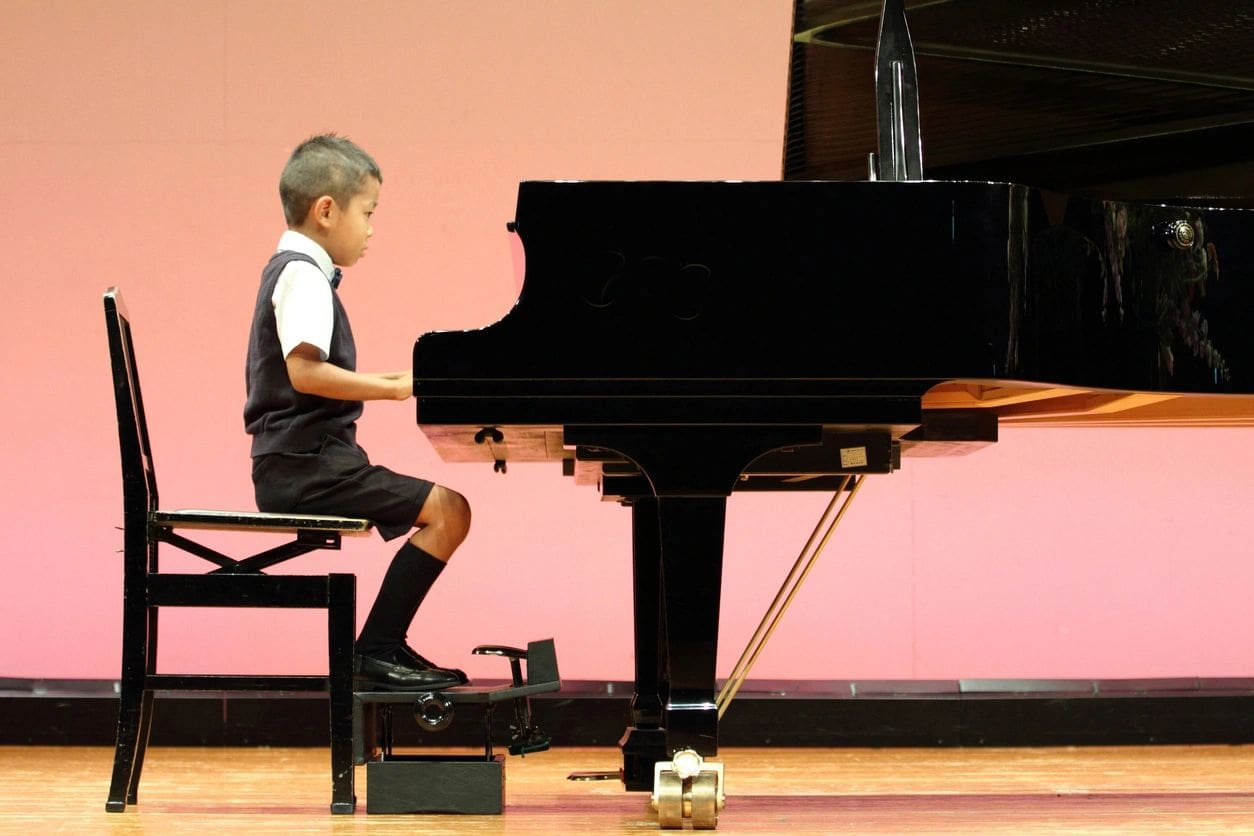

The Relevance of Humidity Control
In my extensive experience as a piano technician, I have found humidity control devices, notably the Dampp-Chaser, to play a crucial role in preserving the integrity of pianos. While the climate variations in the Los Angeles area may not be as extreme as those on the East Coast, where drastic fluctuations can immediately impact a piano's tuning and vital components, it's essential to recognize the significance of humidity control even in milder climates.
Mitigating Climate Impact
The Los Angeles region, encompassing diverse areas like Malibu, Santa Monica, and the arid desert expanses of Palmdale, experiences varying degrees of humidity challenges. Whether it's the coastal dampness or the dry conditions in the desert, both can adversely affect a piano's soundboard, treble/bass bridges, and pin block. Humidity control devices emerge as proactive measures to mitigate the potential harm caused by these climate variations.


Tailored Solutions for Varied Climates
While the climate in Los Angeles may not exhibit the extreme fluctuations seen on the East Coast, the localized challenges demand tailored solutions. Residents in coastal areas like Malibu and Santa Monica may rightfully be concerned about dampness, while those in desert regions like Palmdale need to address issues related to dryness. Humidity control devices, such as the Dampp-Chaser, offer targeted solutions to ensure consistent piano performance and longevity in diverse climates. By embracing humidity control devices, piano owners in the Los Angeles area can proactively safeguard their instruments from the subtle yet impactful effects of climate variations, contributing to the sustained excellence and longevity of their cherished pianos.
The Prudent Use of Dampp-Chaser
In my extensive experience, I've encountered instances where the installation of the Dampp-Chaser, a humidity control device, appeared to be an unnecessary investment due to relatively stable climate conditions. While the installation itself doesn't necessarily harm the piano, there are rare instances, often stemming from incomplete installations lacking a crucial component called the "humidistat," where adverse effects on the piano can occur.
Caution in Unwarranted Installations
It's crucial to exercise caution when considering the installation of a Dampp-Chaser, especially in regions where the climate changes are minimal. While the device generally poses no harm, instances of incomplete installations, where the humidistat is overlooked, can result in unintended consequences. Such oversights can lead to surrounding air becoming excessively dry, impacting the piano's soundboard and potentially affecting string tension.

Informed Decision-Making
When considering the installation of a Dampp-Chaser, my advice to customers is to engage in a thoughtful dialogue with their piano technician. Establishing a clear understanding of the necessity and desirability of this device is crucial, especially when approached by a technician for the first time. A well-established professional relationship with the technician, coupled with a recognition of excessive ambient instability in the piano's location, can warrant additional investment.
Open Dialogue with Your Technician
Customers are encouraged to ask pertinent questions and seek clarification on the need for a Dampp-Chaser. A transparent and open conversation with the technician can provide valuable insights into whether the piano's environment truly necessitates this investment. It is essential to foster communication and trust, ensuring that any recommendations align with the specific conditions and requirements of the piano.
The Remarkable Longevity of Pianos
Inquiries about piano "longevity" often draw parallels to the finite lifespan of average human beings. However, my optimistic response remains consistent: "Your piano will endure long after we're not." The resilience of any well-maintained piano, shielded from abuse and extreme weather conditions, positions it to gracefully surpass a century and potentially endure even longer.

A Testament to Quality Craftsmanship
Decent pianos, when spared from abuse and vandalism, are designed with enduring craftsmanship, mirroring the longevity seen in the most robust human-built structures. The potential for a piano to last a hundred years or more is not an exaggeration but a testament to the meticulous engineering and quality materials invested by the makers. Even when neglected, pianos often showcase remarkable resilience, with neglected uprights and grands demonstrating an enduring spirit.
Susceptibility to Neglect
While neglected pianos, devoid of regular maintenance like tuning and basic repairs, may encounter challenges such as string breakage during restoration, the sturdiness of old uprights and grands becomes evident. These instruments, often built like tanks, stand as living artifacts, a testament to the foresight of makers who crafted them with the intention to endure the test of time. In contemplating piano longevity, the key lies in fostering a culture of care and maintenance. Well-preserved pianos not only survive but continue to resonate with timeless melodies, weaving a narrative of endurance that extends far beyond my present moment.

A Consideration of Restoration
The potential demise of a piano is often linked to major catastrophes, turning the instrument into a victim of natural disasters. When faced with such circumstances, a critical evaluation arises regarding the feasibility of restoration, contemplating the investment required to restore the piano to its former glory. While complete destruction warrants careful consideration, certain esteemed makes, such as Steinways, may merit restoration due to their enduring market value and exceptional craftsmanship, elevating them to the status of art.
Value Beyond Destruction
In instances where complete destruction is averted, the decision to restore becomes a nuanced evaluation, considering factors like market value, craftsmanship, and sentimental significance. Notably, pianos with historical or sentimental value may inspire restoration efforts driven by the owner's deep connection to the instrument.

Guidance from Reputable Rebuilders
Navigating the restoration decision is best undertaken with the guidance of a reputable rebuilder. Their expertise allows them to provide informed advice on whether restoration is warranted and, if so, to what extent. Decisions regarding the replacement of components like the soundboard or pin block are crucial considerations that align with both the piano's condition and the owner's aspirations. In times of uncertainty following a catastrophe, seeking counsel from a trusted rebuilder ensures a thoughtful and informed approach to piano restoration, preserving not only an instrument but also the rich history and emotional connections it holds.
Navigating the Piano Market
As a seasoned piano professional, I often find myself fielding numerous inquiries from individuals embarking on the journey of purchasing a piano. While my personal preferences inevitably come into play, I advocate for a tailored approach based on the buyer's budget, available space, preference for new or used instruments, and the decision to buy or rent from a store. This personalized guidance ensures that prospective buyers make informed choices aligned with their unique needs.


Considerations for the Aspiring Pianist
Budget and Space Allocation
Understanding the budget constraints and the space available for the piano's placement are foundational considerations. This ensures that the chosen piano not only meets musical needs but also fits seamlessly into the designated room.
New or Used
The decision between a new or used instrument is a pivotal one. Assessing personal preferences and weighing the advantages of each option allows buyers to make a choice that aligns with their expectations and financial considerations.
Buying or Renting
Determining whether to buy or rent from a store adds another layer to the decision-making process. Considering the long-term commitment and financial implications ensures a choice that resonates with the buyer's circumstances.
Expert Appraisal Services
In the midst of their research, buyers often encounter uncertainties about specific piano brands or conditions. As part of my services, I extend support in the appraisal and evaluation of pianos. This assistance is particularly valuable when navigating the complexities of purchasing decisions, including the exploration of free pianos offered by individuals parting with their instruments. Ultimately, the piano-buying journey is a personal one, and my role is to empower buyers with the knowledge and guidance they need to make choices that harmonize with their musical aspirations and lifestyle.

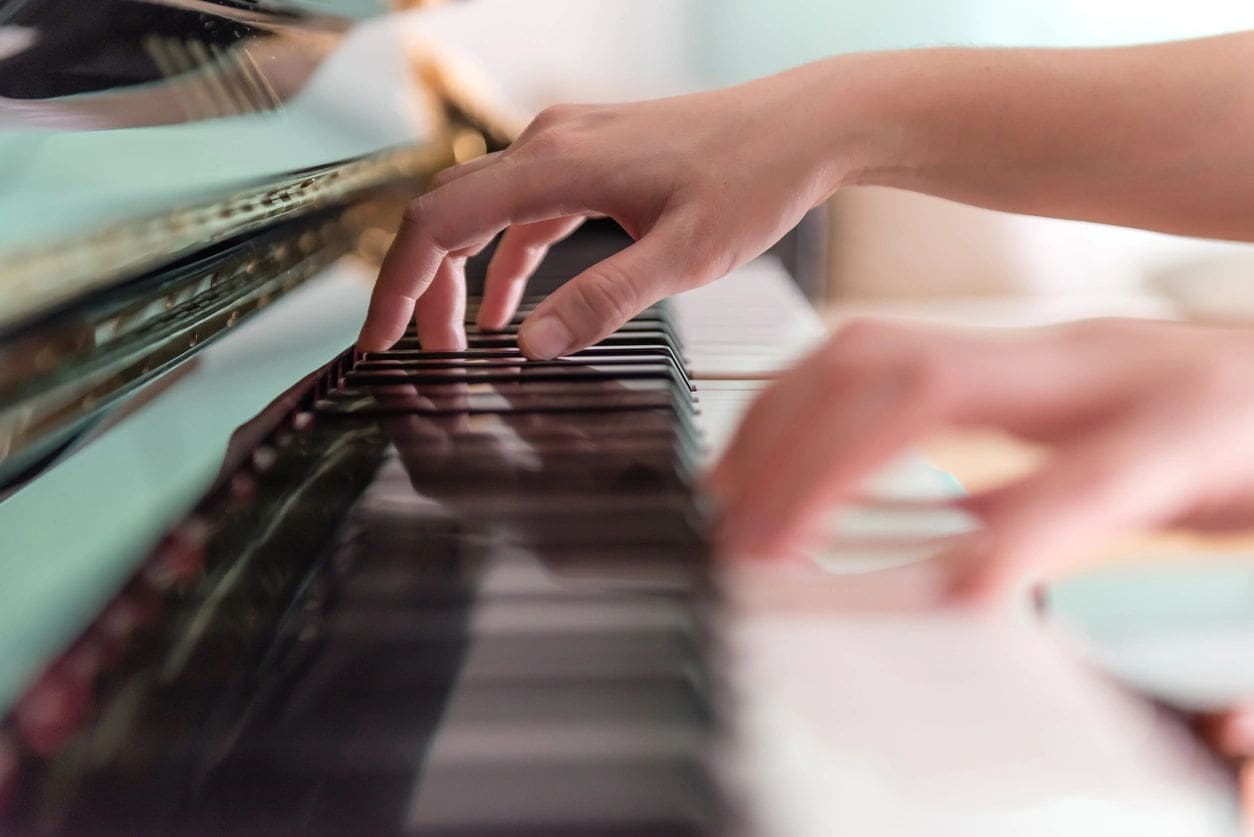
Ensuring Sound Investment
Should a buyer choose to enlist my expertise in evaluating a potential piano purchase, my thorough assessment encompasses critical factors that define the instrument's condition and value. Key considerations include:
Piano-Related Resources
As part of my commitment to supporting piano enthusiasts, I provide links to valuable piano-related resources, including a comprehensive source for piano information and reputable piano moving companies.
Reach Out To Me for Your Piano Needs
Feel free to reach out for any piano-related assistance, from tuning and evaluations to expert advice on purchases.
